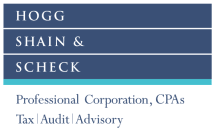Accessing Your Adjusted Cost Base
Recently, our firm took on a client – we’ll call her Mrs. X – who, in 2024, had the opportunity to buy the business where she was a long-time employee. Mrs. X jumped at the chance, agreeing to purchase all shares of the business from her boss for $1,200,000, with the amount being paid in equal installments of $240,000/year over 5 years. While Mrs. X didn’t have the funds personally, the business generated sufficient annual after-tax cash flows that she could use to make the annual payments. The problem? How to access corporate funds in a tax-efficient manner.
2024 Dividends
Mrs. X’s impetus to seek out tax advice grew from the personal tax situation she found herself in for 2024. To fund the first instalment, Mrs. X took $240,000 in non-eligible dividends from the business, resulting in a significant personal tax bill at the April 30, 2025 filing deadline.
As a frame of reference, an individual[i] with $100,000 of taxable income would pay incremental taxes of approximately $103,000 on a $240,000 non-eligible dividend. For an individual[ii] in the highest tax bracket, the additional taxes amount to about $114,500. Drawing funds from the business in this manner to fund its acquisition is the opposite of tax-efficiency.
Alternative Approach – Adjusted Cost Base Monetization
Thankfully for Mrs. X, and anyone else in a similar situation, an alternative exists – adjusted cost base (“ACB”) monetization. Recall that Mrs. X paid $1,200,000 for the business’s shares; that is her ACB. The potential benefit of high ACB shares is on a future sale. If Mrs. X decides to sell the business at some point, she’ll only have a capital gain if the sale price exceeds her ACB. In Mrs. X’s case, however, future capital gain minimization is of little worth as a tax strategy.
For tax purposes, Mrs. X’s company’s operations constitute an active business, meaning its revenue isn’t derived from passive sources such as interest, dividends, rents and royalties. While there are other criteria, having active business operations is a key metric for a gain on shares of a Canadian-controlled private corporation (“CCPC”) to be eligible for an individual’s lifetime capital gains exemption (“LCGE”). The LCGE limit for 2025 is $1,500,000 and is indexed for inflation starting in 2026, so it’s easy to see why using her ACB in this way has limited value. Instead, we recommended an ACB monetization strategy.
At a high level, ACB monetization takes the ACB of Mrs. X’s shares and converts it into a note payable by the company to her, which Mrs. X can draw on tax-free. The conversion is achieved by having Mrs. X exchange some, or all, of her high ACB shares for a promissory note that is due on demand (the “Demand Note”). Typically, the Demand Note is non-interest bearing but that’s not required. The crucial part is that the exchange qualifies as a tax-deferred rollover under s.85 of the Income Tax Act.
All the details of a s.85 ACB monetization are beyond the scope of this article but some key aspects are:
- The amount of the Demand Note cannot exceed the ACB of the shares exchanged. For example, if Mrs. X exchanged half her shares, the Demand Note cannot exceed $600,000.
- The consideration received for the exchanged shares must include new shares of the company.
- The fair market value (“FMV”) of all consideration received must equal the FMV of the exchanged shares. For example, if today Mrs. X’s company is worth $1,500,000 and she exchanges all of her shares, Mrs. X could receive a $1,200,000 Demand Note and new shares worth $300,000.
- Mrs. X must elect to transfer current shares for an amount between their ACB and FMV. Generally, the elected amount used is the ACB of the shares so that a gain isn’t triggered on the exchange unless it makes sense to trigger one, such as when the individual has capital loss carryforwards.
Following the exchange, Mrs. X is able to withdraw the remaining instalments from her company without incurring any additional personal income taxes, compared to the $400,000+ in taxes she would otherwise be liable for.
When Not to Pursue ACB Monetization – Factors to Consider
ACB monetization is not always available, or advisable, as a strategy. An individual should be cautious in trying to monetize ACB where:
- The individual has little, or no, LCGE. As mentioned above, as part of a s.85 rollover, Mrs. X’s consideration must include new shares of the company. Whatever amount is assigned to the Demand Note reduces the ACB of the new shares. In other words, if the Demand Note is for the full $1,200,000, the ACB of the new shares will be $NIL and a future sale of those shares will result in a capital gain equal to the proceeds.
- The shares were acquired in a non-arm’s length transaction. In that case, their ACB might be “soft” and cannot be monetized as described herein without adverse tax consequences.
- One of the purposes of the ACB monetization is to benefit, directly or indirectly, by any means a designated person of the individual. A designated person would be the individual’s spouse/common-law partner, or a minor who is the individual’s child, sibling, niece or nephew.
Conclusion
Where available to an individual, an ACB monetization strategy can result in significant tax savings as a method of drawing corporate funds that would otherwise be taxed as dividends or salary. There are, as with all tax planning, tricks and traps to avoid, and individuals should not attempt ACB monetization without the help of a tax professional.
[i] Individual resident in Ontario who only claims the basic personal amount.






